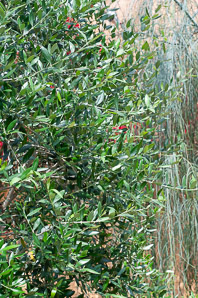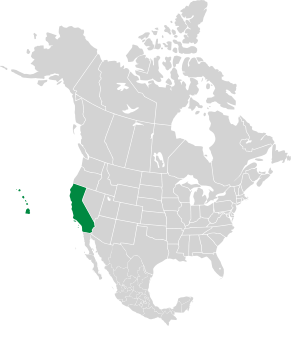|
Olea europaea L.
Common olive tree
| Kingdom | Plantae | Plants, but not fungi, lichens, or algae |
| Subkingdom | Tracheobionta | Vascular plants—plants with a “circulatory system” for delivering water and nutrients |
| Division | Magnoliophyta | Flowering plants, also known as angiosperms |
| Class | Magnoliopsida | Dicotyledons—plants with two initial seed leaves |
| Subclass | Asteridae | A large class that encompasses asters |
| Order | Lamiales | Aromatic herbs and shrubs, including lavender, lilac, olive, jasmine, ash, teak, snapdragon, sesame, psyllium, garden sage, mint, basil, and rosemary |
| Family | Oleaceae | Temperate climate shrubs, trees and a few vines, include forsythia, ash, jasmine, privet, olive, lilac, and many others |
| Genus | Olea | A Latin name for the important fruit tree, the olive, known from antiquity as a symbol of peace and good will |
| Species | europaea | From Europe |
About plant names...
[An article has not been written yet.]
Olea europaea description by Thomas H. Kent, last updated 25 May 2020.

© FloraFinder.org. All rights reserved.
|
|

4/6/2011 · Howard Peters Rawlings Conservatory & Botanic Gardens, Druid Hill Park, Baltimore, Maryland 
Range:

About this map...
|




